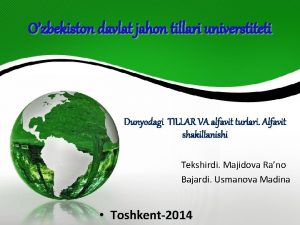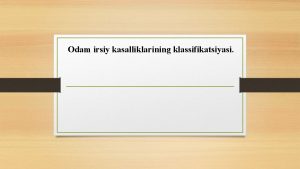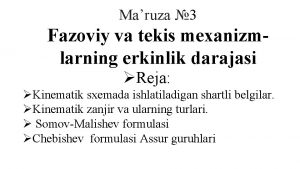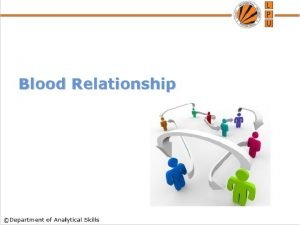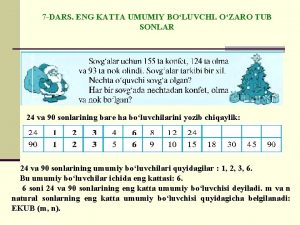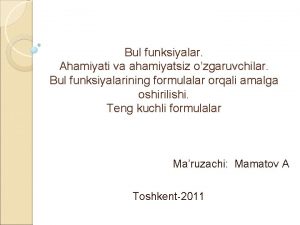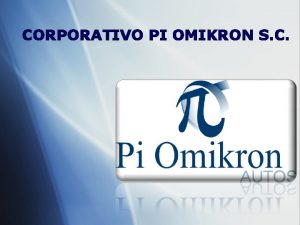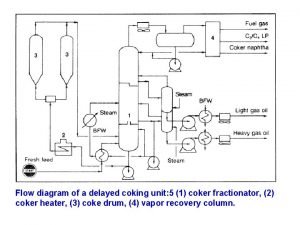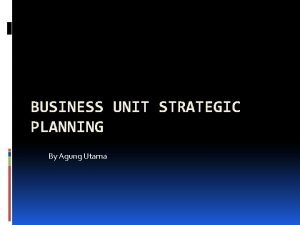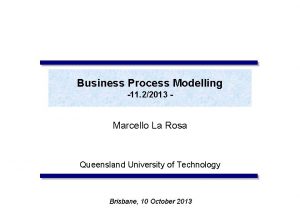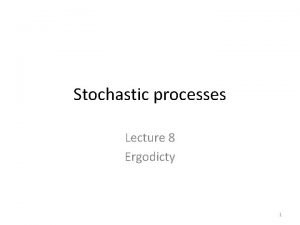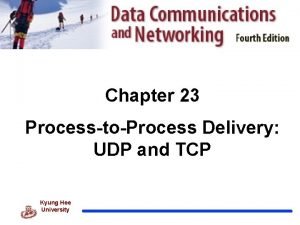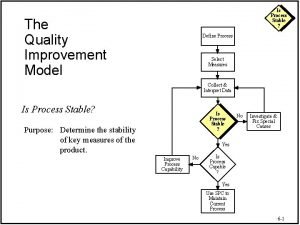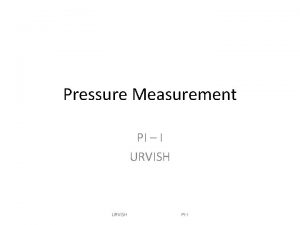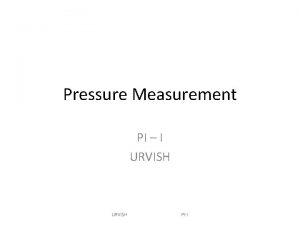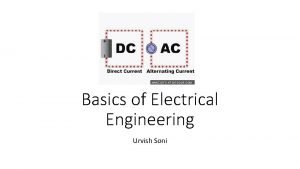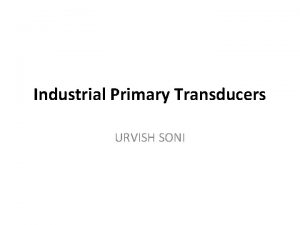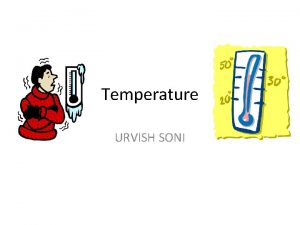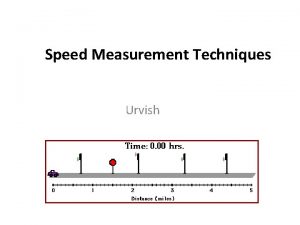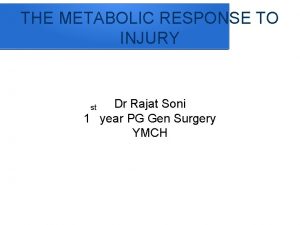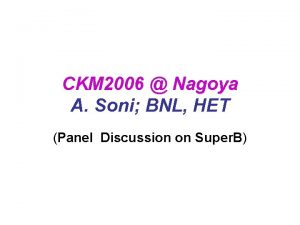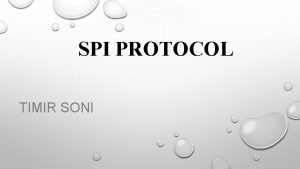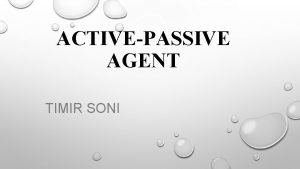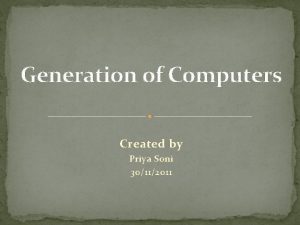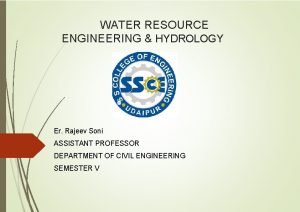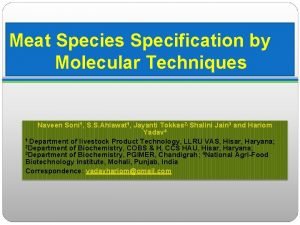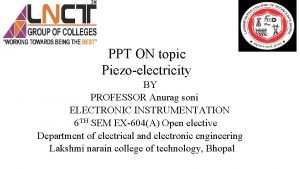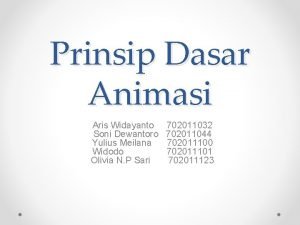Process Urvish Soni Unit Process A unit process




























- Slides: 28

Process Urvish Soni

Unit Process • A ''unit process'' is one or more grouped operations in a manufacturing system that can be defined and separated from others.

Unit Process • Chemical processes usually have three interrelated elementary processes 1. Transfer of reactants to the reaction zone 2. Chemical reactions involving various unit processes. 3. Separation of the products from the reaction zone using various unit operations

Importance • Unit Process can be seen as multiple operation combined in a plant • Overall Finance and production planning can be done • Realistic targets to be set • Manpower requirement can be calculated

Cracking • In this process by cracking Large atomic structure into small atomic structure by hit and thermal energy.

Cracking 1. 2. 3. 4. Steam cracking Thermal cracking Hydro cracking Fluid Catalytic cracking or Cat Cracking https: //www. youtube. com/watch? v=7 KO 3 X_8 Qhs. A&t=110 s

Reforming • Reforming is chemical process to convert hydro carbon heaving law octane rating into high octane rating is called reforming. • Naphtha from by reforming we can get high octane gasoline. https: //www. youtube. com/watch? v=Vof. KBcd. Ztjo Video Start with 6: 51

Octane rating

Polymerization • One or more type monomer bonded together with ionic bond from a polymer chain this process is called polymerization.

Polymers • Polythin • P. V. C. • Polystearin https: //www. youtube. com/watch? v=0 y. OJaj. PJpt. A

Alkylation • Alkylation is the transfer of alkane from one molecule to another molecule

Alkens

Application • In which alkalization of D. N. A is use chemotherapy to damage cancer cell

Hydrogenation • Hydrogenation – meaning, to treat with hydrogen – • It is a chemical reaction between molecular hydrogen and another compound or element, usually in the presence of a catalyst such as nickel, palladium or platinum. https: //www. youtube. com/watch? v=2 i. Kczq. O 1 Ti. E


Hydrogenation • Hydrogenation is a chemical reaction between chemical compound/Element and hydrogen is presents of catalyze. • This process is commonly used to reduce organic compound. • Hydrogenation typical consisted the addition of hydro atom to a molecule generally alkenes.

Applications • Food industry – Hydrogenation converts liquid vegetable oils into solid or semi-solid fats • Petrochemical industry – In petrochemical processes, hydrogenation is used to convert alkenes and aromatics into saturated alkanes (paraffins) and cycloalkanes (naphthenes), which are less toxic and less reactive.

Isomerization • Isomer is the process by which one molecule is transfer to another molecule which has exactly same atom but atoms are rearranged • -A-B-C -> C-B-A -> B-C-A • This is related molecule is known as isomer.

Isomerization

Isomerization • Isomerzation is hydro carbon cracking in organic chemistry where fuels such as pentane isomer are hilted in presents of platinum catalysts this process is isomerization.

Absorption • It is the process in which in molecule pass entire bulky material uniformly. • Once time absorption occurs molecule cannot separate easily from Absorbent.

Absorption • Examples : – Absorption of perfume molecule by skin – CO 2 Mixture in water as Soda • Applications : – Cooling application – Ice production – Cold storage https: //www. youtube. com/watch? v=dj. Iz. Xvw. Iz 5 U

Adsorption • It is the process in which molecule attached which surface of adsorbent with non uniformly.

Adsorption

Adsorption • • Properties: It occurs non uniformly It is surface phenomena It is affected by temperature Application: Textile industry Coating of metal

Extraction • Extraction is very common process used when Isolating, purifying a product. • Types of Extraction • Solid- solid Extraction • Liquid- liquid Extraction • Gas- Gas Extraction https: //www. youtube. com/watch? v=KBPv 2 p 7 T 1 wo

Extraction • Application: • Extraction is use for separating of two aliment/Material. • It is used for cleaning of a basic component from impurity.

Thank You
 Dunyodagi alfavit turlari
Dunyodagi alfavit turlari Irsiy kasalliklar turlari
Irsiy kasalliklar turlari Erkin jismning erkinlik darajasi
Erkin jismning erkinlik darajasi Kapilyarlik
Kapilyarlik Relationship by blood
Relationship by blood Umumiy bo'luvchi deb nimaga aytiladi
Umumiy bo'luvchi deb nimaga aytiladi Parachute
Parachute Mulohazalar algebrasi formulalari
Mulohazalar algebrasi formulalari Omikron auto
Omikron auto Kedar soni
Kedar soni Parajiya soni
Parajiya soni Unit 10, unit 10 review tests, unit 10 general test
Unit 10, unit 10 review tests, unit 10 general test Unit process and unit operation
Unit process and unit operation Unit operation and unit process
Unit operation and unit process Surplus keuangan adalah
Surplus keuangan adalah Right triangle trigonometry
Right triangle trigonometry Si vs english units
Si vs english units Algebra 2 unit 1 practice test
Algebra 2 unit 1 practice test Contoh soal perhitungan unit cost rumah sakit
Contoh soal perhitungan unit cost rumah sakit Setiap unit akuntansi dianggap sebagai unit yang mandiri
Setiap unit akuntansi dianggap sebagai unit yang mandiri Delayed coker unit process+flow diagram
Delayed coker unit process+flow diagram Business unit strategic planning
Business unit strategic planning Os coxae
Os coxae Substantive vs procedural due process
Substantive vs procedural due process Business process levels
Business process levels Ergodicty
Ergodicty What is process to process delivery
What is process to process delivery Coronoid and condylar process
Coronoid and condylar process Minitab
Minitab
